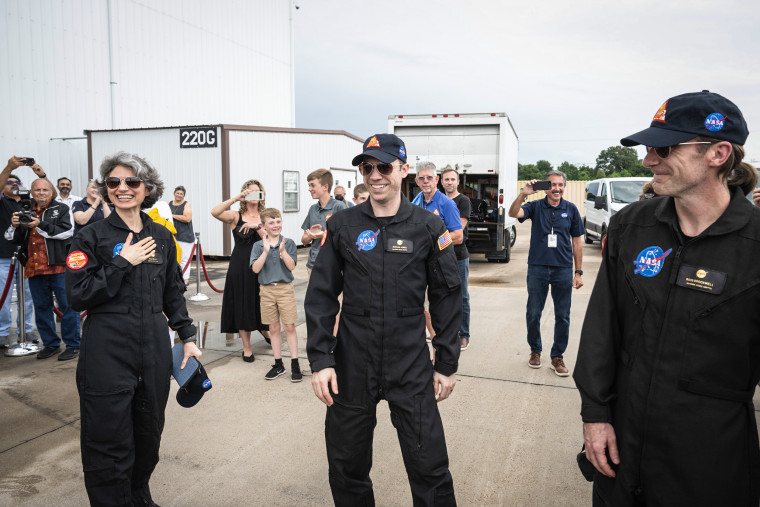-
 Find in Members
Find in Members Find in Projects
Find in Projects Find in Channels
Find in Channels



NASA is developing technology to send astronauts to the red planet as early as the 2030s. The simulated journey was the first of three planned for the habitat as part of NASA’s Crew Health and Performance Exploration Analog, or CHAPEA, missions.
The volunteers were greeted by an applauding crowd as they exited the habitat.
“Hello. It’s actually just so wonderful to be able to say hello to you all,” Haston, the CHAPEA commander, said with a laugh.
The mission sought to see how the group could handle the various challenges expected to confront humans on Mars. The crew dealt with environmental stressors, communication delays and limited resources. They ate shelf-stable food, as well as vegetables they grew while they were living in isolation.
Brockwell, the CHAPEA flight engineer and a structural engineer and public works administrator, said the mission offered a perspective on sustainability.
“I’m grateful for the chance to live the idea that we must utilize resources no faster than they can be replenished and produce waste no faster than they can be processed back into resources,” he said.

“We cannot live, dream, create or explore on any significant time frame if we don’t live these principles. But if we do, we can achieve and sustain amazing, inspiring things like exploring other worlds,” Brockwell added.
Mars Dune Alpha is at NASA’s Johnson Space Center in Houston. The habitat includes a sandbox full of red sand where participants conduct simulated “Marswalks.” The habitat has private bedrooms, a kitchen and two bathrooms. It also has areas for medical treatment, recreation, fitness and work activities, according to NASA.

Small description

Get instant notifications as they happen.
You can change your preference anytime from browser settings.
Note: if your browser block the pop-up then you need to allow it.
UniqueThis, Inc. ©2024
- Contact - About - Terms - Privacy - Privacy Center - Trademark - Career OpportunitiesCopyright © 2024 UniqueThis, Inc. All rights reserved.